When you purchase a new RV, it will almost always come with a standard 12-volt deep-cycle RV battery. Most RVs that operate from a single battery will use this setup. However, many RVers who choose to upgrade their battery will come across people recommending a 6-volt setup. If 12 volts is more than 6 volts, why would you want to scale down? Well, there are many good reasons why you may want to consider this.
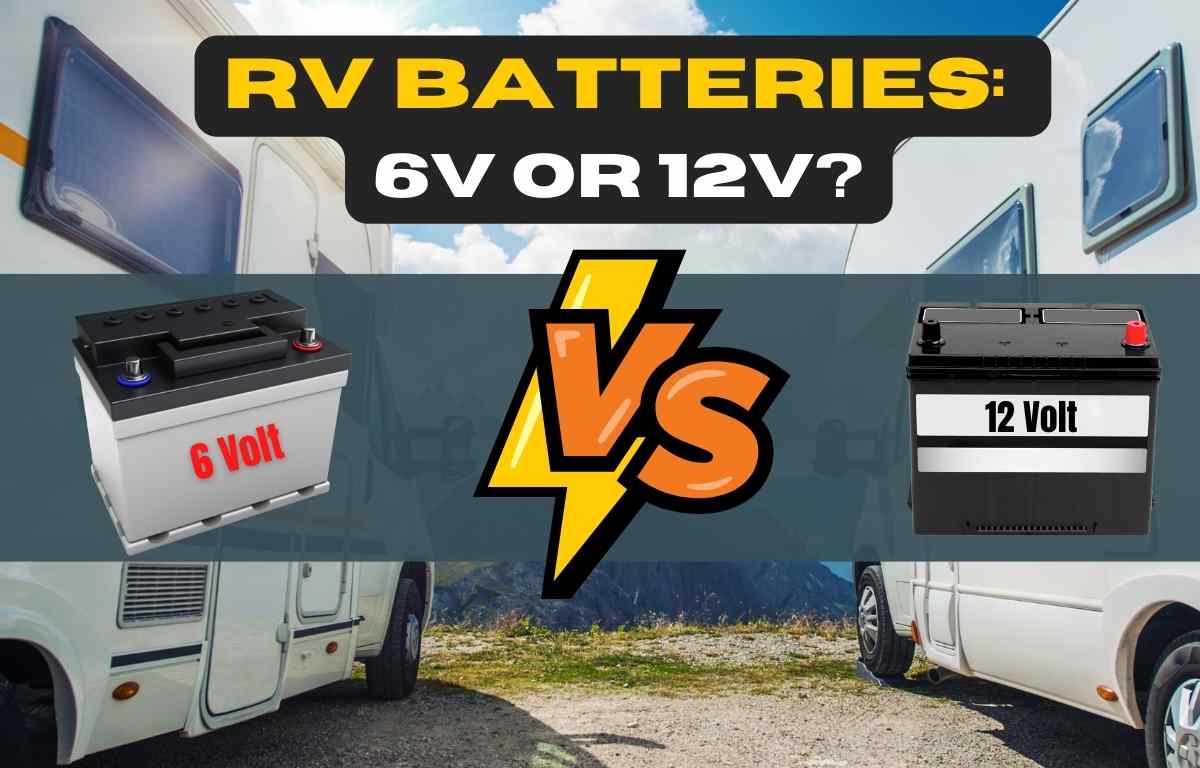
In this article, I’ll work to break down the often confusing topic of RV battery systems and explain why a 6-volt battery setup may be something worth considering. I’ve been writing about RV batteries for years, but this is one of my favorite topics. I’ll get into a lot of detail in this article and recommend some great products, but if you simply want the quick reasons why many RVers are switching to this setup, here are the main ones:
Benefits of Using 6-Volt Batteries
- Increased Capacity: Two 6-volt batteries, when combined, can store and deliver more energy than a single 12-volt battery of the same size.
- Durability and Reliability: They typically have a longer lifespan due to less deep discharge and are known for their robustness.
- Lighter and Smaller: Suitable for confined spaces in RVs and easier to handle due to their size and weight.
- Performance: They generally have a higher Amp Hour (Ah) rating, providing longer run times and a steadier power supply
Almost all RV components operating on DC (direct current) power will require 12-volts. Since this has long been the standard in the RV industry, and since uniformity is important, all new RVs will be designed around a 12-volt system. For this reason and to achieve the correct voltage, the easiest option is to use a 12-volt battery. However, a common practice we’ll discuss in this article is to use two 6-volt batteries, wired in series, to produce the same voltage. In this instance, you now have a battery bank setup rather than a single battery.
Why would you choose to run two 6-volt batteries instead of a 12-volt?
Most people will choose to run two 6-volt batteries instead of a single 12-volt battery for a bump in performance. While both setups will deliver the necessary 12 volts, a standard 6V lead-acid battery will typically have a large Amp Hour (Ah) rating, meaning you’ll get a longer runtime.
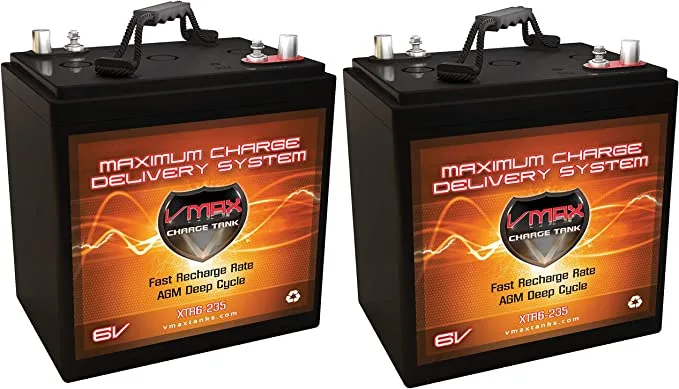
6-volt batteries are also more robust with thicker plates, meaning you have a higher charge/discharge cycle rating. Also, because they have fewer plates, they’re lighter than a 12-volt equivalent. So overall, the smaller size will result in an overall lighter setup.
A guide to Amp Hour ratings and the benefits of 6-volt batteries
The Ah rating is one of the most important numbers you need to pay attention to when shopping for a deep cycle battery. This number, which you can find on the battery label, lists the number of Amps the battery can deliver per hour. For example, a 100 Ah battery has enough stored energy to supply 100 amps for one hour. Similarly, the same battery can provide one Amp for 100 hours, two Amps for 50 hours, five Amps for 20 hours, on so on. In essence, the greater the amp hours, the greater the capacity. However, you MUST realize that this rating is capacity, not usable capacity.

With most lead-acid batteries, you cannot completely drain the battery capacity without damaging the battery. In practice, this limitation is usually around 50%. For this reason, a traditional 100 Ah lead acid battery will provide about 50 Ah of usable capacity. However, this is different for a lithium-ion battery, which allows you to use most of its capacity.
When you know the Ah of the battery and its voltage, you can easily calculate its available Watt Hours (Wh) to determine what’s available for RV use. Remember, a standard lead acid battery will only have about 50% of useable capacity as compared to a lithium-ion battery. The following calculator can give you a general sense of what’s available with your setup.
So, what about 6-volt batteries? Many 6-volt deep-cycle batteries are designed to deliver a steady stream of power over a longer period with a higher amp hour rating. This benefit is one of the reasons they’re so popular in golf carts and forklifts. It’s common to find affordable 6-volt batteries with a 225 Ah rating. When wired together to provide 12 volts of power, you get the increased amperage per hour from the batteries. So, while a standard 12-volt battery may provide 100 amps per hour, a 6-volt setup can provide 225 amps per hour. You’re still subject to the same discharge limitations of lead acid chemistries, but the added capacity can significantly increase your useable power.
Common Types of Batteries for RV applications
A lead-acid battery is the most popular type of deep-cycle battery that typically ships with an RV. They’re available in three types: flooded wet cell, absorbed glass mat (AGM), and gel cell. A flooded wet cell is the most common type of RV battery. The AGM is the next most popular, but most RV manufacturers don’t supply these as standard since they are more expensive. Finally, gel cell batteries are the least popular and not the best option for an RV because of slow charging limitations. However, putting differences aside, all lead-acid batteries function similarly. Each battery cell contains lead plates with a separator and an electrolyte solution (water and sulfuric acid). When a reverse current gets applied to the battery (through a battery charger or your RV converter), it creates electrons that are stored in the battery and made available when you need power.
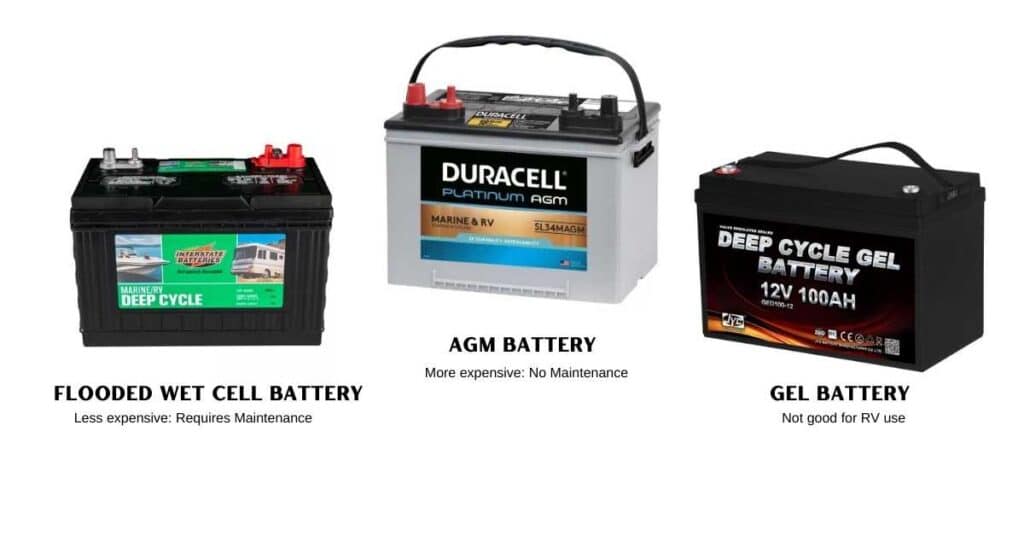
Flooded wet cell batteries will usually require maintenance, including adding the right amount of distilled water to the battery. AGM batteries are sealed and typically won’t require maintenance. Since every battery is a little different, you will need to refer to your battery’s documentation to determine if and how you need to maintain it. If you don’t have this, you can quickly look it up online at the manufacturer’s website. However, one thing to note about batteries is that if they’re not maintained, they will eventually fail, which may be the source of your RV battery woes.
While lead-acid batteries are still the most common type in RVs, more options are becoming available for other battery types, including lithium-ion batteries, the same kind of battery used to power most electric cars. If upgrading an RV battery or building a boondocking battery setup, you may want to consider these batteries. However, while lithium-ion batteries offer many benefits to the RVer, they’re expensive.
A deep-cycle RV battery, sometimes called a marine battery, is different from a vehicle starting battery. They have deep discharge cycles at a lower discharge rate than non-deep cycle RV batteries. At full capacity, they can provide a lot of energy for regular use, and when combined in a battery back (multiple batteries), can even power your entire RV. It’s important to select the right battery based on your power needs.
Is a lithium battery better than two 6-volt batteries?
One of the most significant benefits of a lithium 12-volt battery is its useable capacity. This benefit is one of the reasons that makes
Often a less expensive alternative to a lithium battery is to use two 6-volt lead acid batteries. The decision typically comes down to the cost per amp hour. While lithium batteries are a great option when you need a lot of power for a larger system, many users may find all the capacity they need with two 6-volt batteries.
If you’re looking for an excellent 12-volt lithium battery option, check out this review of the Power Usus 100 Ah LiFePo4 battery. It’s a great balance of affordability and quality.
How does an RV battery system work?
In your RV, you’ll typically have two power sources: boat AC (alternative current) and DC (direct current). Your AC power is similar to the grid electricity you use at home. The DC system is designed for specific components that use 12-volt power.
The setup in an RV is quite remarkable, as the entire rig is designed to take advantage of both power sources and be flexible. When plugged in at the campground, you will have power for all your major appliances like your air conditioner, outlets, electric water heater, TV, etc. However, when you’re off the grid, you’ll be able to rely on DC power to run your furnace and water pump, light your propane appliances, and power lights.
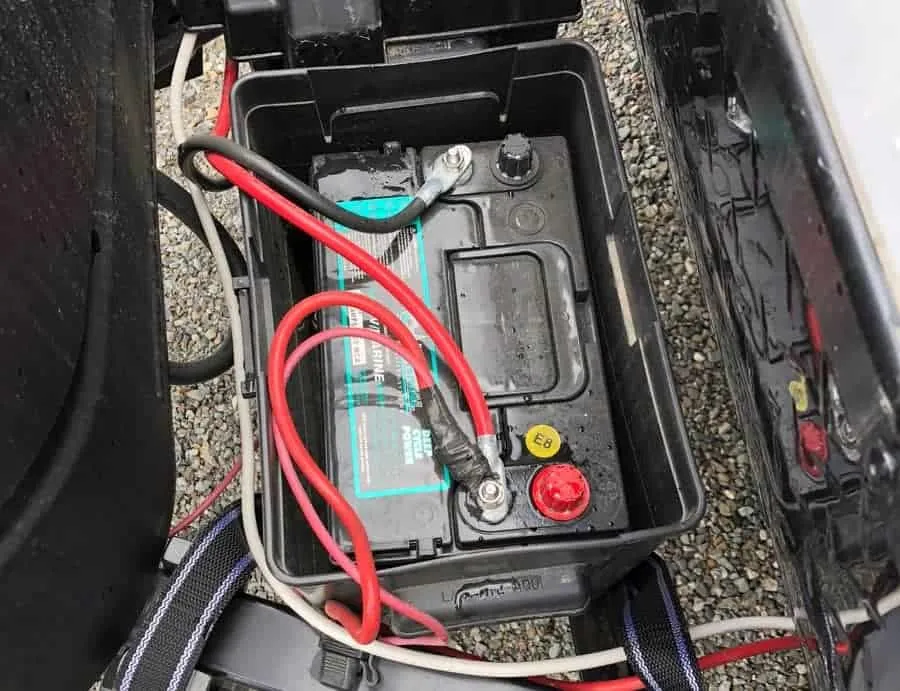
Many RVs will feature an integrated system, where the AC power will keep the batteries charged when running 12-volt appliances. Likewise, the 12-volt system may use an inverter to convert battery power to AC, allowing you to run non-12-volt appliances. Many people also choose to install solar panels and a solar charger in their battery system.
An inverter in an RV is a small device that converts the direct current (DC) power stored in the RV’s batteries into alternating current (AC) power, the type of power most household appliances and systems use. This setup allows you to use AC-powered devices and appliances such as televisions, microwaves, and air conditioners without being connected to an external power source. Some RVs have built-in inverters, while others require an external inverter.
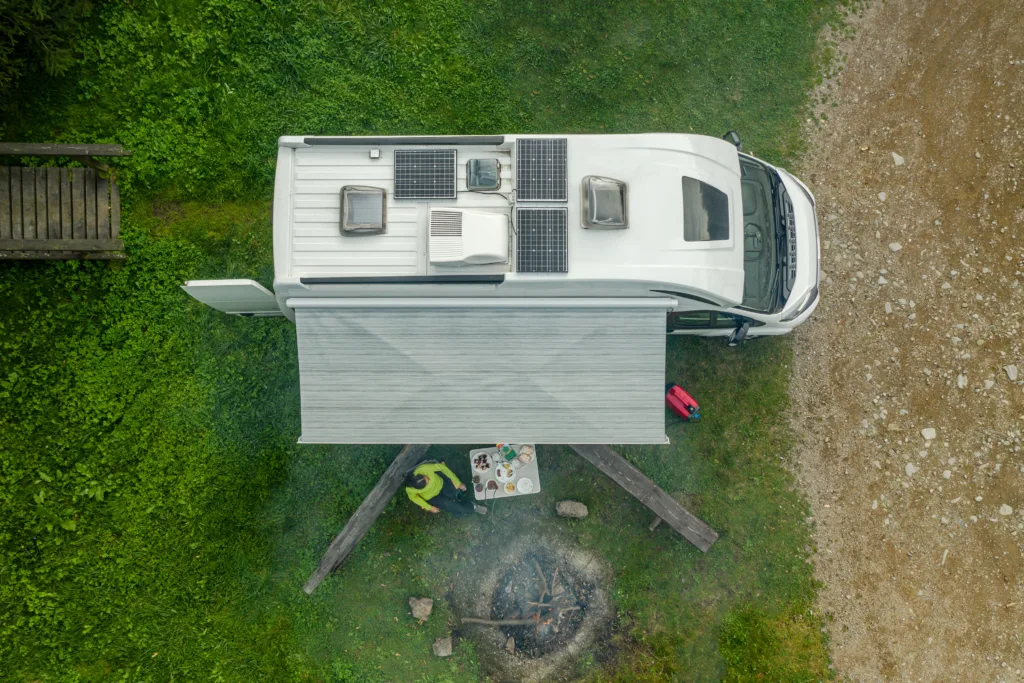
In the latter setup, though, your limitation will be the capacity of the battery. For example, without a larger battery bank, you won’t be able to run things like air conditioning or microwave on DC power very long. This limitation is when a larger capacity battery system becomes essential.
What is the difference between 6-volts and 12-volts?
It all comes down to voltage which should be much of a surprise given the name. A 12-volt battery has a voltage of 12 volts, which means it can produce 12 volts of electrical energy. It’s the same voltage you use in your car, motorcycle, and other passenger vehicles. It’s also the voltage system that RVs are designed to use. A 6-volt battery, on the other hand, has a voltage of 6 volts. It is typically used in applications with a lower voltage requirement, such as golf carts, forklifts, and other industrial equipment. Many people will simply refer to these as 6-V golf cart batteries.
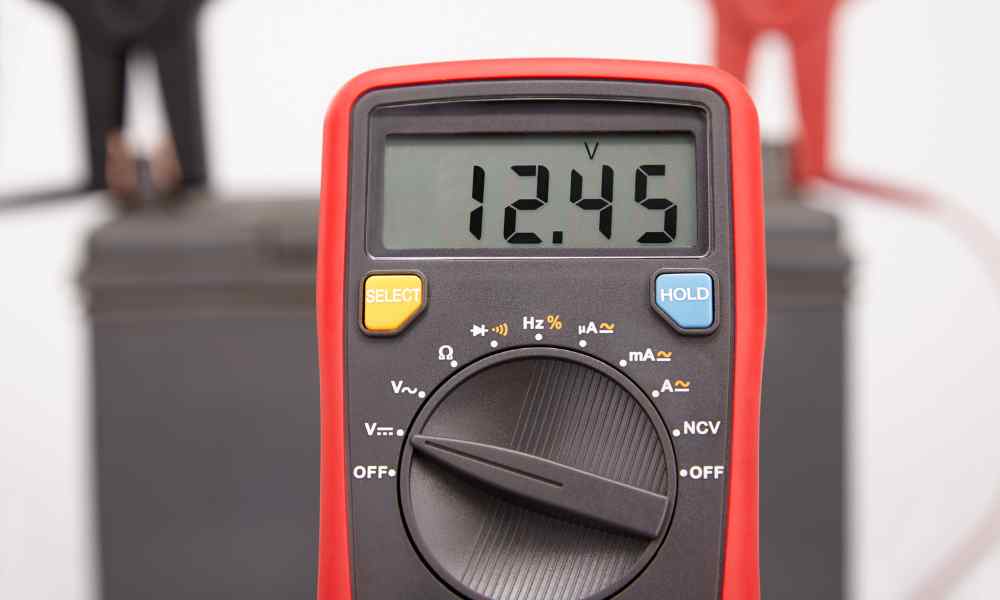
A good way to think about voltage is to picture a water hose. If the water is the charge (the energy), the voltage is the water pressure. The Ah is the available water supply. The current flow is the water flow. Some appliances need higher pressure, and more voltage, to operate effectively. In an RV, all of your DC components are designed for 12-volts. To achieve that, you need to use a 12-volt battery or two 6-volt batteries wired in series.
In terms of capacity, a 12-volt battery typically has a higher capacity than a 6-volt battery, meaning it can store and deliver more energy. This is because 12-volt batteries have more cells than 6-volt batteries, and each cell can store and deliver a certain amount of energy.
What does it mean to wire 6-volt batteries in series?
There are two main ways to connect batteries, in series or in parallel. When batteries are connected in series, they essentially feed energy from both batteries simultaneously. For example, if you have two 6-volt batteries wired in series, you will have 6V + 6V flowing to your component. The combined voltage is the same as 12-volts. Connecting batteries in series increase the amount of voltage. It doesn’t increase the ampere capacity.
However, if wired in parallel, rather than both batteries delivering 6 volts simultaneously, resulting in 12-volts, they’ll supply only 6 volts. So, in essence, you’re simply connecting two batteries to create a larger one (more capacity).
For RV battery wiring, if you’re running two 6-volt batteries, they need to be wired in series. If you are running two 12-volt RV batteries, they must be wired in parallel. Your goal is to provide 12-volts of power regardless of what batteries you’re using.
How do you connect batteries in series?
Connecting batteries in series involves physically connecting them in a way where the voltages of the batteries are combined, In this scenario, the Ah remains the same as each identical battery.

To connect batteries in series, you follow these steps:
- Connect the negative terminal of one battery to the positive terminal of the next.
- Now wire the positive terminal of the first battery in the series to the positive terminal on your RV.
- Connect the negative terminal of the last battery in the series to the negative terminal on your RV.
Can you mix 6-volts and 12-volt batteries?
The short answer is no. You cannot connect and run power from 6V and 12V batteries. One of the most important factors about using multiple batteries is balance. You want the stream of voltage coming out of each battery to be identical. Even using different brands or ages of the same voltage battery can cause problems. So when selecting a battery system or replacement, it’s best to do it at the same time, from the exact same battery manufacturer and age.
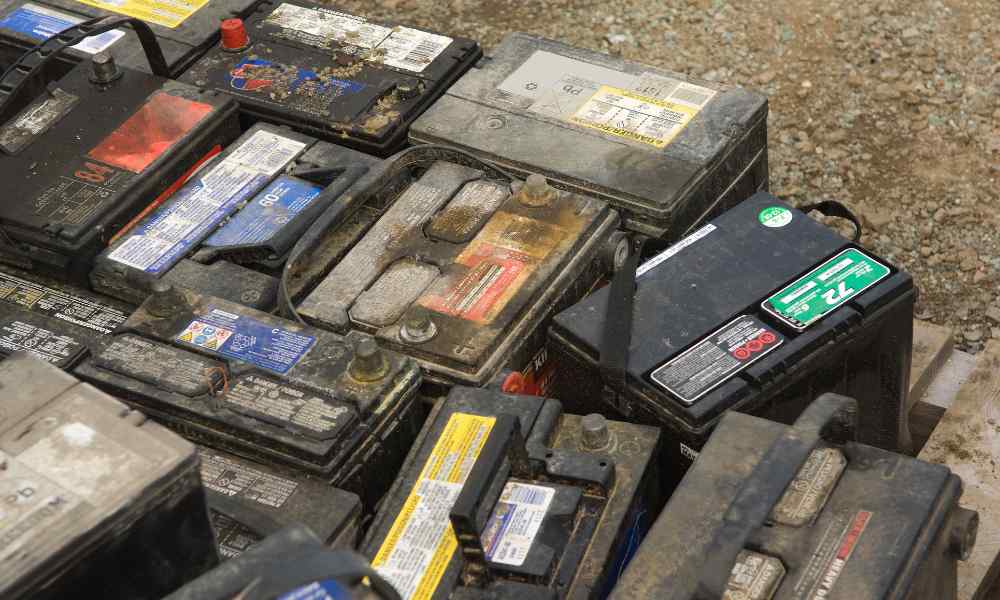
The main difference between 12-volt and 6-volt batteries is the voltage and capacity. As a result, 12-volt batteries are typically used in applications where a higher voltage is required, while 6-volt batteries are used in applications where a lower voltage is required. However, two 6-volt batteries wired together will equal a single 12-volt battery.
Can you use more than two 6V batteries instead of 12V batteries?
Absolutely, and this is quite common for RV setups. In fact, when shopping for 6-volt RV batteries, you may see them sold in packs for 4, which provide a large capacity and lighter weight than equivalent 12-volt batteries.

Wiring more than two 6-volt batteries will look slightly different than a simple series wiring. This is because you’ll essentially be wiring two 6-volt batteries in parallel and then wiring each battery bank in series. with Parallel wiring, just think of it as creating two 12-volt batteries.
Is there an advantage to using two 6V batteries over a single 12V battery?
- Increased Capacity: You are effectively doubling the battery’s capacity by using two 6-volt batteries instead of a single 12-volt battery. The battery can store and deliver more energy than a 12-volt equivalent.
- More Durable: Two 6-volt batteries will typically have a longer lifespan than a single 12-volt battery because they will be drained less deeply. They also have fewer but heavier plates, which are less susceptible to battery use and charging stresses, improving battery life.
- Increased Reliability: 6-volt batteries are known for their reliability. This reason is often due to their durability but also because they aren’t typically exposed to the same strain as a 12-volt battery.
- Smaller: 6V batteries are typically smaller than 12V batteries, making them more suitable for use in smaller, confined spaces. This advantage is significant in an RV, especially if you plan to build a larger battery bank.
What are the disadvantages of using two 6-volt batteries instead of one 12-volt battery?
For every positive, there is usually a negative. However, the positives typically outweigh the negatives in this setup. But they are important to consider if you’re considering the switch.
- Cost: If you’re looking to increase your capacity, you’ll need to purchase two 6-volt batteries at the same time rather than just adding a second 12-volt battery. This requirement can create a situation where it may cost a little more upfront. However, the overall cost per Ah may be less expensive for a 6-volt setup.
- Harder to find: While it’s relatively easy to order 6-volt batteries online or find them if you have time, they’re less common than 12-volt deep cycle batteries. If you need a quick replacement, it will be more challenging than heading to your local RV store and picking one up.
- Battery housing: Since most RVs are designed to use a single 12-volt battery, you’ll likely need a new battery storage box to accommodate the 6-volt batteries. You may also have limited space if installing it on the tongue of your travel trailer, which is a common battery location. You will also need to purchase additional wiring to connect them in series.
What are some of the best 6-volt batteries available for RVs?
When buying 6-volt batteries, you want deep-cycle batteries designed for applications like RVs. Luckily, many of them on the market are available for this application. You may also find a great deal on used 6-volt golf cart batteries, making the upgrade even more affordable.
However, if you’re looking for some new batteries, below are some excellent options for converting to a 6-volt setup:
Conclusion
Operating two 6-volt batteries instead of a single 12-volt battery may be a better option for increasing your overall battery capacity in your RV, providing an often more reliable and capable supply of battery power to your RV components.
A 6-volt battery electrical system is advantageous if you frequently need to operate your RV off battery power. While it’s not the only way to do it, it’s a popular alternative many RV owners choose when upgrading their RV. Before the availability of more affordable lithium batteries, a 6-volt battery setup was often considered the best option for larger battery bank systems because they weigh less, are more reliable, and last a long time. However, when comparing the cost of a 6-volt system, it’s always a good idea to compare a lithium battery bank alongside it.
At the end of the day, it will mostly come down to cost. The fun thing about RV battery power is that you have multiple options for achieving the same results. Some will simply offer more benefits in the system’s costs, weight, and footprint. Good luck, and remember to leave a comment if you have a question or to share your experience with your personal 12-V RV battery setup.

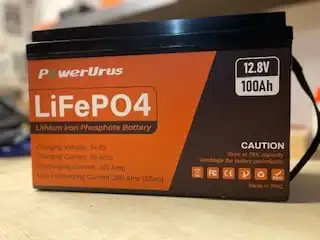
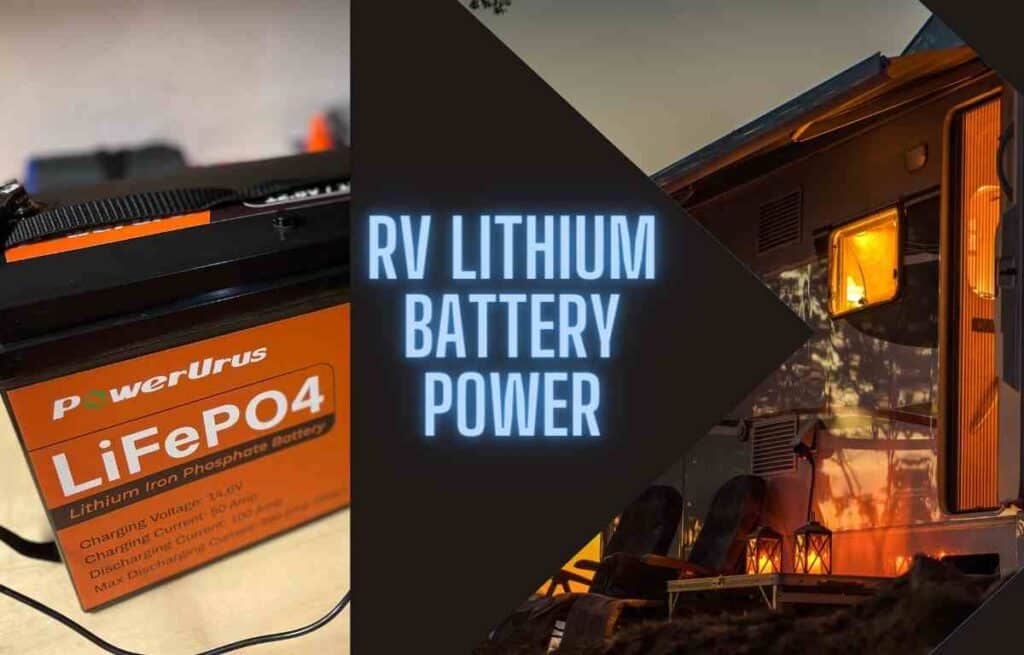
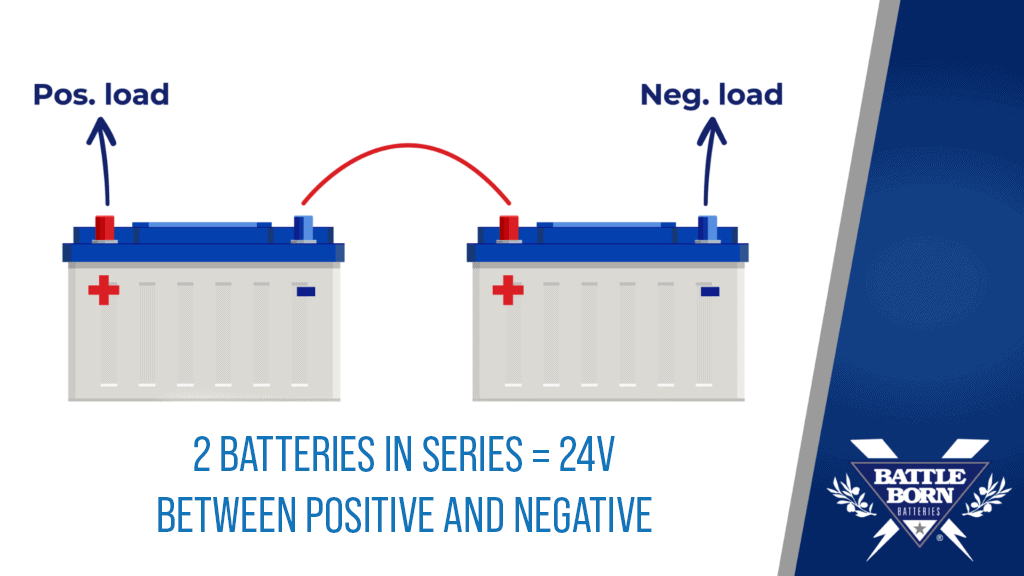
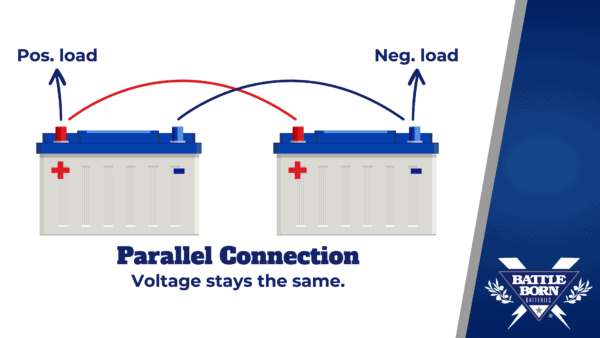
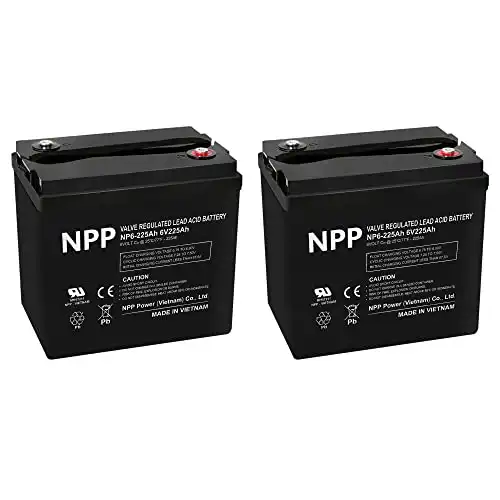
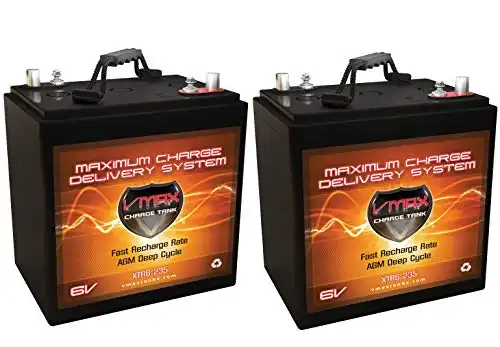

Although most RVs come standard with 12V batteries, that doesn’t mean it’s the only type of battery that can be used to power your onboard equipment. In order to achieve the 12V required to operate your onboard equipment, the 6V batteries must be connected in series. The best thing about these new batteries is that they are relatively maintenance free and can last much longer than their 12V counterparts.
There are a few downsides, like their high prices and being fairly rare and difficult to obtain, but you’ll find that their benefits far outweigh their downsides.
The voltage of a battery is only one of many factors to consider when choosing a battery. 12V batteries are significantly heavier than the 6V versions.So, when you are on your own, 6 volt RV batteries will be more manageable for you.
Thanks for sharing- very good point!